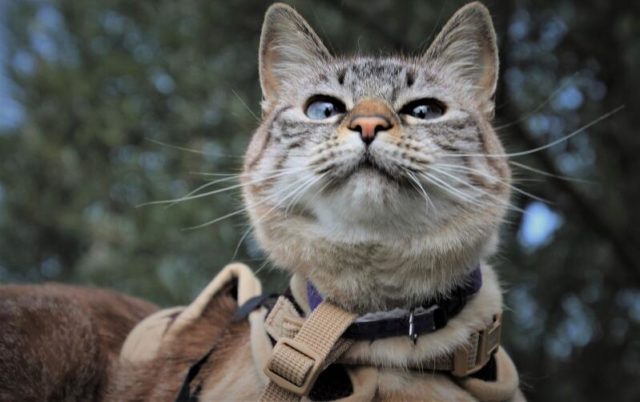People in Walldorf, in south-west Germany, were ordered in May to keep their cats indoors to protect an endangered bird.
CATS in the German town of Walldorf will finally be allowed to get some fresh air and stretch their legs after authorities lifted a three-month special lockdown.
People in Walldorf, in south-west Germany, were ordered in May this year to keep their cats indoors to protect an endangered bird, the crested lark, or Galerida cristata.
Owners were allowed to let their cats out provided that they were kept on a leash no more than two metres long. But, from 00:01 local time on Monday, the animals were again, allowed to roam free.
The BBC reported that conditions of the lockdown stipulated that if a cat escaped while the lockdown was in force, owners were told to call a special hotline and then find and detain the offending feline, with any breach of the lockdown rules resulting in a hefty fine of up to €50,000 (R835,000).
Walldorf city authorities had been attempting to protect the local population of the crested lark, stating that the species is listed as critically endangered in the state of Baden-Württemberg and wider Germany, with only three breeding pairs left in Walldorf itself.
But cat lovers criticised the restrictions, saying they “would harm the cats’ welfare”, while also stressing that they supported efforts to protect the larks.
“I’m really glad that’s happening,” Peter P Marra told The Guardian. He’s an ecologist at Georgetown University in the US and one of the authors of the 2016 book “Cat Wars: The Devastating Consequences of a Cuddly Killer”.
This kind of policy is the right approach, he says, “but we shouldn’t wait until it’s down to a few individual birds”. In his opinion, no domestic cats should be out in the environment, anywhere.
The Guardian also reported on Monday that in the US, the debate about free-roaming cats has been raging for years. Marra’s own work has shown that cats, both feral and pet, kill billions of birds, mammals and reptiles annually. And while it’s primarily motivated by perceived risks from coyotes and traffic, 70% of US cat owners now keep their cats inside, up from 35% in the late 1990s.
It is too soon to know whether the Walldorf lockdown has benefited the larks, but the authorities announced they would lift the restriction two weeks earlier than expected, saying that birds which hatched in the spring are now considered to be sufficiently developed and less vulnerable to attack.
The mayor of Walldorf said this was good news, but he and the local cat community may find their celebrations short-lived as the lockdown is expected to return next spring, and in subsequent years during the birds’ breeding season.








